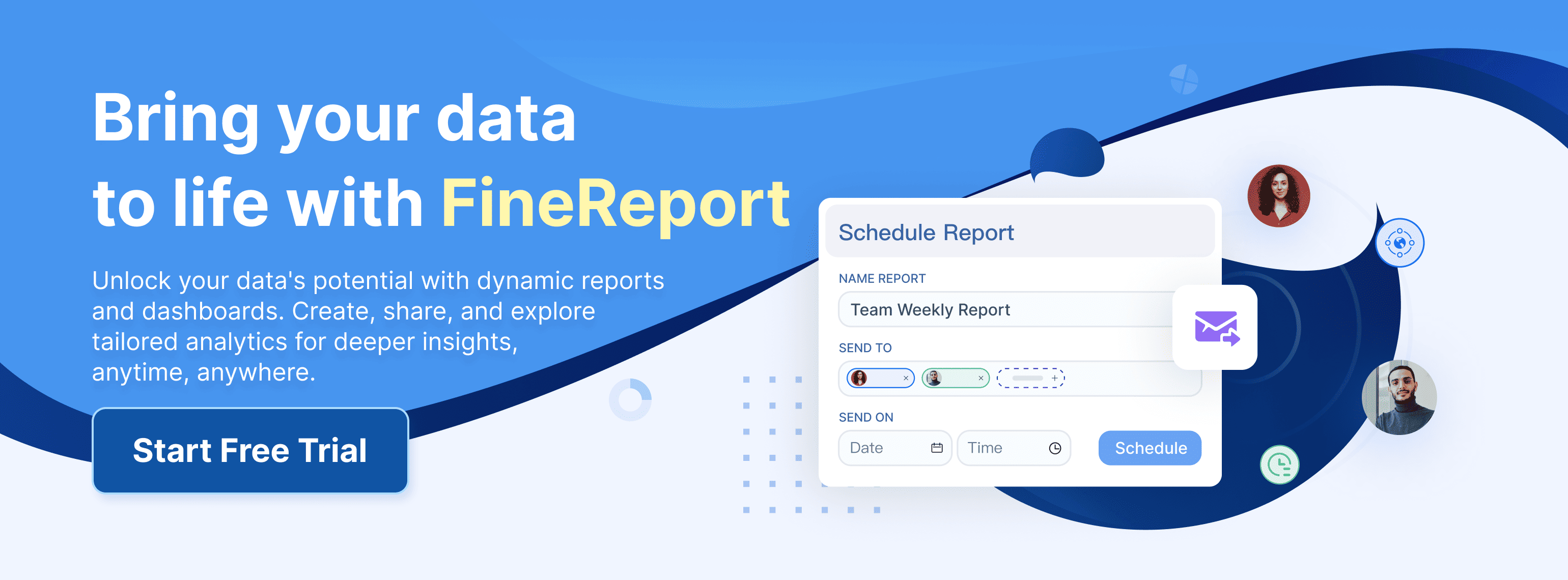


Digital format serves as a method to encode information for digital devices. You encounter digital formats daily, whether reading an e-book or streaming music. These formats play a crucial role in modern technology and communication. They ensure that data is accessible and easily shared across platforms. Tools like FineDataLink, FineReport, FineBI, and FineVis enhance your ability to manage and visualize digital data effectively. By understanding digital formats, you can leverage these tools to optimize data integration and reporting, making informed decisions with ease.
Understanding Digital Format
Definition and Explanation of Digital Format
Digital format refers to the way information is encoded for use on digital devices. You encounter digital formats in various forms, such as text, audio, video, and images. Each type serves a specific purpose and is designed to be compatible with different devices and platforms. For example, text formats like PDF and DOCX allow you to read documents on computers and tablets. Audio formats like MP3 and WAV let you listen to music on smartphones and speakers. Video formats such as MP4 and AVI enable you to watch movies on TVs and laptops. Image formats like JPEG and PNG display pictures on websites and social media. Understanding these formats helps you choose the right one for your needs, ensuring that your content is accessible and easy to share.
Historical Context of Digital Format
The concept of digital format has evolved significantly over time. In the early days of computing, digital formats were simple and limited. You might remember floppy disks, which stored small amounts of data. As technology advanced, so did digital formats. The introduction of CDs and DVDs allowed for larger storage capacities and better quality. The rise of the internet brought about new formats optimized for online use, such as HTML for web pages and GIFs for animations. Today, digital formats continue to evolve, driven by the need for higher quality and greater efficiency. This evolution reflects the growing importance of digital formats in our daily lives, as they enable seamless communication and information sharing across the globe.
Types of Digital Format

Digital formats come in various types, each serving a unique purpose. Understanding these formats helps you choose the right one for your needs, ensuring your content is accessible and easy to share.
Text Formats
Text formats encode written information for digital devices. You encounter them daily in documents, e-books, and web pages.
Examples and Uses
- PDF (Portable Document Format): You use PDFs for sharing documents that maintain their formatting across different devices. They are ideal for e-books, reports, and forms.
- DOCX (Microsoft Word Document): This format is common for creating and editing text documents. You often use it for writing essays, letters, and resumes.
- HTML (Hypertext Markup Language): HTML is the backbone of web pages. It structures content on the internet, allowing you to view and interact with websites.
Audio Formats
Audio formats store sound recordings digitally. You listen to them on various devices, from smartphones to home speakers.
Examples and Uses
- MP3 (MPEG Audio Layer III): MP3 is a popular format for music files. You use it for its small file size and compatibility with most devices.
- WAV (Waveform Audio File): WAV files offer high-quality sound. You often use them in professional audio editing and production.
- AAC (Advanced Audio Codec): AAC provides better sound quality than MP3 at similar bit rates. You find it in streaming services and digital broadcasts.
Video Formats
Video formats encode moving images and sound. You watch them on TVs, computers, and mobile devices.
Examples and Uses
- MP4 (MPEG-4 Part 14): MP4 is widely used for storing video and audio. You use it for its versatility and compatibility with most media players.
- AVI (Audio Video Interleave): AVI files offer high-quality video and audio. You often use them for editing and archiving purposes.
- MKV (Matroska Video): MKV supports multiple audio and subtitle tracks. You find it in high-definition video content and online streaming.
Understanding these digital formats enhances your ability to manage and share content effectively. By choosing the right format, you ensure your information reaches the intended audience without compatibility issues.
Image Formats
Image formats encode visual information for digital devices. You encounter them in photos, graphics, and illustrations on websites, social media, and digital publications.
Examples and Uses
- JPEG (Joint Photographic Experts Group): JPEG is a widely used format for photographs. You choose it for its balance between image quality and file size, making it ideal for web use and digital cameras.
- PNG (Portable Network Graphics): PNG offers lossless compression, preserving image quality. You use it for graphics with transparent backgrounds and detailed images like logos and icons.
- GIF (Graphics Interchange Format): GIF supports simple animations and limited color palettes. You often see it in memes and short animations on social media platforms.
- TIFF (Tagged Image File Format): TIFF provides high-quality images suitable for printing. You use it in professional photography and publishing where image detail is crucial.
Understanding these image formats helps you select the right one for your needs. By choosing the appropriate format, you ensure your images maintain quality and compatibility across different platforms and devices.
Characteristics of Digital Format
Compression
Compression reduces the size of digital files. You benefit from this by saving storage space and speeding up data transfer. Two types of compression exist: lossless and lossy. Lossless compression retains all original data, making it ideal for text and important documents. Formats like PNG and ZIP use lossless compression. Lossy compression removes some data to reduce file size further. This type suits audio and video files where perfect accuracy isn't necessary. MP3 and JPEG are examples of lossy formats. By understanding compression, you can choose the right balance between quality and file size for your needs.
Compatibility
Compatibility ensures that digital files work across different devices and platforms. You encounter this when sharing documents or media. A compatible format opens on various systems without issues. For instance, PDFs display consistently on computers and mobile devices. MP4 videos play on most media players. Choosing widely compatible formats prevents problems when accessing or sharing files. You avoid frustration and ensure smooth communication by selecting the right format for your audience.
Quality
Quality in digital formats affects how information appears and sounds. High-quality formats preserve detail and clarity. You notice this in images, videos, and audio. For example, WAV files offer superior sound quality compared to MP3s. TIFF images maintain high resolution, suitable for printing. However, higher quality often means larger file sizes. You must balance quality with storage and bandwidth limitations. Understanding quality helps you make informed decisions about which format best suits your purpose.
Importance of Digital Format in Modern Society

Accessibility
Digital formats make information accessible to everyone. You can read e-books, listen to audiobooks, or watch videos on various devices. This flexibility allows you to access content anytime, anywhere. For individuals with disabilities, digital formats offer tools like screen readers and subtitles. These features ensure that everyone can enjoy and understand digital content. By using digital formats, you help create an inclusive environment where information is available to all.
Efficiency
You can quickly share documents, images, and videos with others. This ease of sharing enhances collaboration and communication. Businesses benefit from digital formats by reducing paper usage and storage costs.
Innovation
Digital formats drive innovation in technology and communication. They enable the development of new tools and applications. You can create interactive content, such as virtual reality experiences and online courses. These innovations enhance learning and entertainment. Digital formats also support the growth of social media and online communities. You can connect with others and share ideas globally. By embracing digital formats, you contribute to a culture of creativity and progress.
Applications of Digital Format in Business
Digital Marketing
Digital formats revolutionize digital marketing. You can reach a global audience with ease. By using digital formats, you create engaging content that captures attention. Videos, infographics, and podcasts are popular choices. They convey messages effectively and attract potential customers. Social media platforms thrive on digital formats. You share content instantly and interact with your audience. This interaction builds brand loyalty and trust.
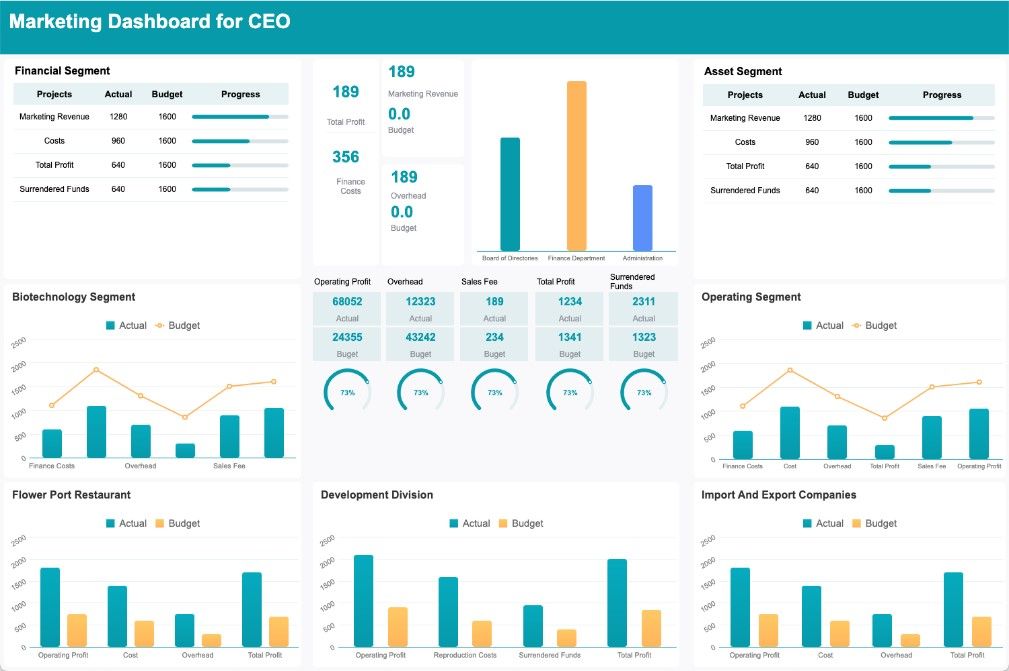
Digital formats also enable targeted advertising. You analyze data to understand customer preferences. This analysis helps you tailor marketing strategies. Personalized ads increase engagement and conversion rates. Email marketing benefits from digital formats too. You design visually appealing newsletters that grab attention. These newsletters keep your audience informed and interested.
E-commerce
E-commerce relies heavily on digital formats. You showcase products through high-quality images and videos. These visuals provide a clear view of what you offer. Customers appreciate detailed product descriptions. Digital formats allow you to present information clearly and concisely. This clarity helps customers make informed decisions.
Online transactions benefit from digital formats as well. You ensure secure payment processing with encrypted data. This security builds customer confidence. Digital receipts and invoices streamline record-keeping. You save time and reduce paperwork.
Customer service improves with digital formats. You offer support through chatbots and email. These tools provide quick responses to inquiries. Satisfied customers lead to repeat business and positive reviews.
Applications of Digital Format in Technology
Software Development
In software development, digital formats play a crucial role. You use them to write, test, and deploy code efficiently. Programming languages like Python, Java, and C++ rely on digital formats to function. These formats ensure that your code runs smoothly across different platforms and devices.
Digital formats also facilitate collaboration among developers. You can share code snippets and libraries easily. Version control systems like Git use digital formats to track changes in your codebase. This tracking helps you manage projects and resolve conflicts quickly.
Moreover, digital formats enable the creation of user-friendly interfaces. You design applications with intuitive layouts and interactive elements. Formats like HTML, CSS, and JavaScript bring your ideas to life. These tools allow you to build responsive websites and mobile apps that engage users.
Data Storage
Data storage relies heavily on digital formats. You store vast amounts of information in databases and cloud services. Formats like SQL and NoSQL organize your data efficiently. This organization ensures quick retrieval and analysis when needed.
Digital formats also enhance data security. You encrypt sensitive information to protect it from unauthorized access. Encryption formats like AES and RSA safeguard your data. This protection builds trust with your users and clients.
Furthermore, digital formats support data backup and recovery. You create copies of your data to prevent loss during system failures. Formats like ZIP and TAR compress your files for easy storage. These backups ensure that you can restore your data quickly in case of emergencies.
Applications of Digital Format in Everyday Life
Social Media
Social media thrives on digital formats. You engage with content through images, videos, and text posts. These formats allow you to express yourself creatively. Platforms like Instagram and TikTok rely heavily on visual content. You capture moments with photos and videos, sharing them instantly with friends and followers.
Digital formats also enhance communication. You send messages, comments, and reactions in real-time. This interaction fosters connections and builds communities. Social media platforms use algorithms to tailor content to your interests. You discover new trends, ideas, and people through personalized feeds.
Moreover, digital formats support multimedia storytelling. You create engaging narratives using a mix of text, images, and videos. This storytelling captivates audiences and encourages sharing. By utilizing digital formats, you contribute to a dynamic and interactive social media experience.
Online Education
Online education benefits greatly from digital formats. You access learning materials in various forms, such as e-books, videos, and interactive modules. These formats cater to different learning styles, making education more inclusive.
Digital formats facilitate remote learning. You attend virtual classes and webinars from anywhere. This flexibility allows you to balance education with other commitments. Online platforms use digital formats to deliver quizzes, assignments, and feedback. You track your progress and receive personalized support.
Furthermore, digital formats enable collaboration among students and teachers. You participate in discussion forums and group projects. These interactions enhance understanding and foster a sense of community. By embracing digital formats, you gain access to a wealth of knowledge and resources, empowering you to learn effectively in the digital age.
FanRuan's Role in Digital Format
FanRuan plays a pivotal role in enhancing digital formats through its innovative solutions. You can leverage these tools to optimize data integration, reporting, and business intelligence.
FineDataLink for Data Integration

FineDataLink simplifies complex data integration tasks. You can synchronize data in real-time across multiple platforms. This tool supports diverse data sources, ensuring seamless connectivity. By using FineDataLink, you streamline data flow and enhance efficiency. Its low-code platform allows you to manage data without extensive coding knowledge. You benefit from its drag-and-drop functionality, making data integration accessible and user-friendly. FineDataLink empowers you to build efficient data layers for business intelligence.
FineReport for Reporting and Visualization
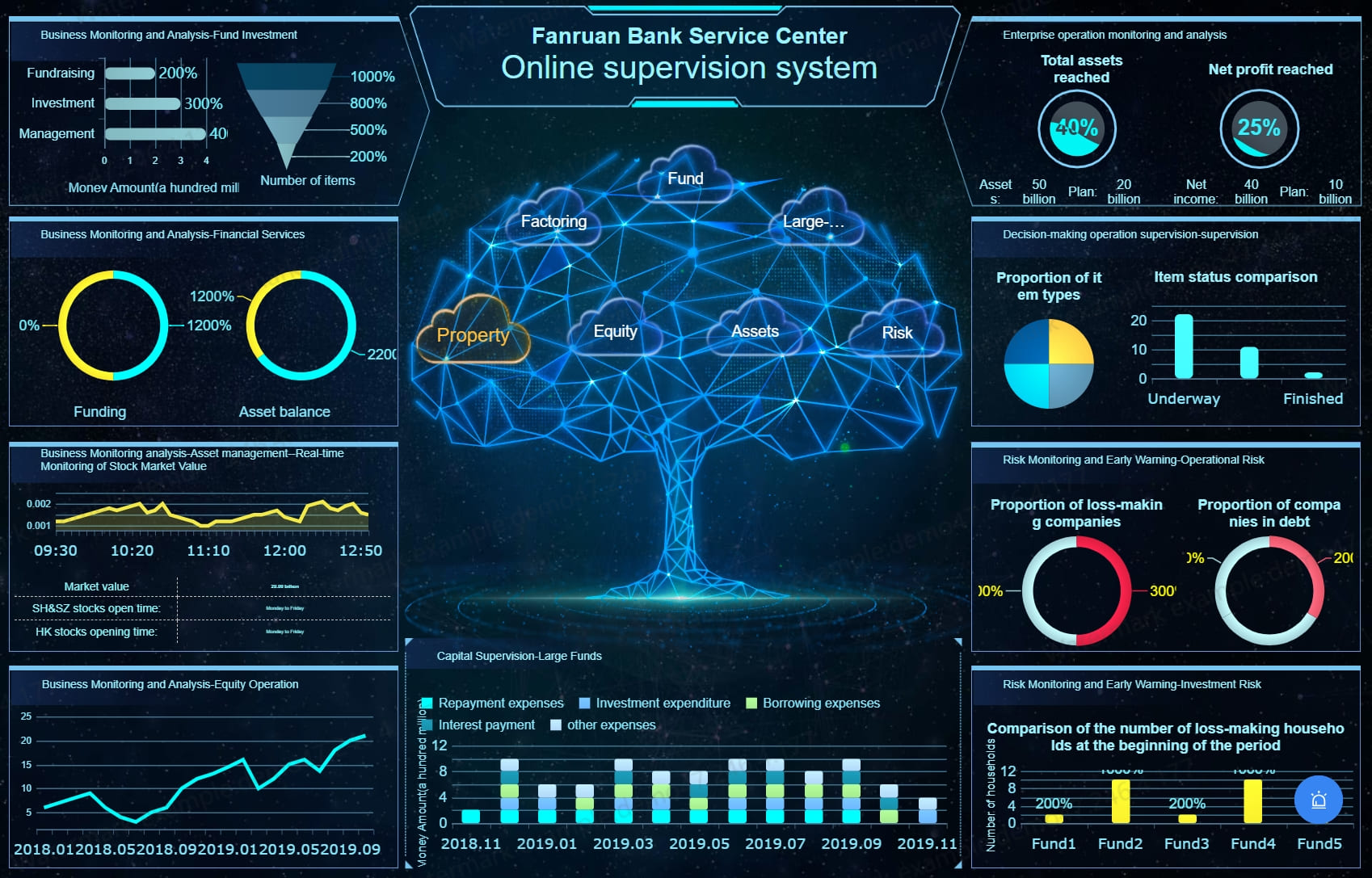
FineReport offers a robust solution for creating dynamic reports and dashboards. You can generate pixel-perfect documents with ease. Its flexible report designer supports diverse visualization types. You uncover deeper insights by using interactive analysis features. FineReport connects to various data sources, enabling comprehensive reporting. You can access your reports on mobile devices, ensuring data availability on the go. This tool enhances decision-making by providing clear and concise visualizations.
FineBI for Business Intelligence

FineBI transforms raw data into actionable insights. You can analyze and share data across your organization effortlessly. Its high-performance computing engine processes large datasets efficiently. FineBI supports real-time analysis, boosting productivity. You can track KPIs, identify trends, and predict outcomes with ease. This tool offers flexible ETL and ELT data processing modes. You benefit from its role-based access control, ensuring data security. FineBI empowers you to make informed decisions and drive business growth.
FineVis for Data Visualization
FineVis revolutionizes how you visualize data. It offers a comprehensive suite of tools that transform raw data into compelling visual stories. You can create interactive charts, dynamic 3D visualizations, and customizable dashboards without needing any coding skills. This accessibility makes FineVis an ideal choice for users of all technical levels.
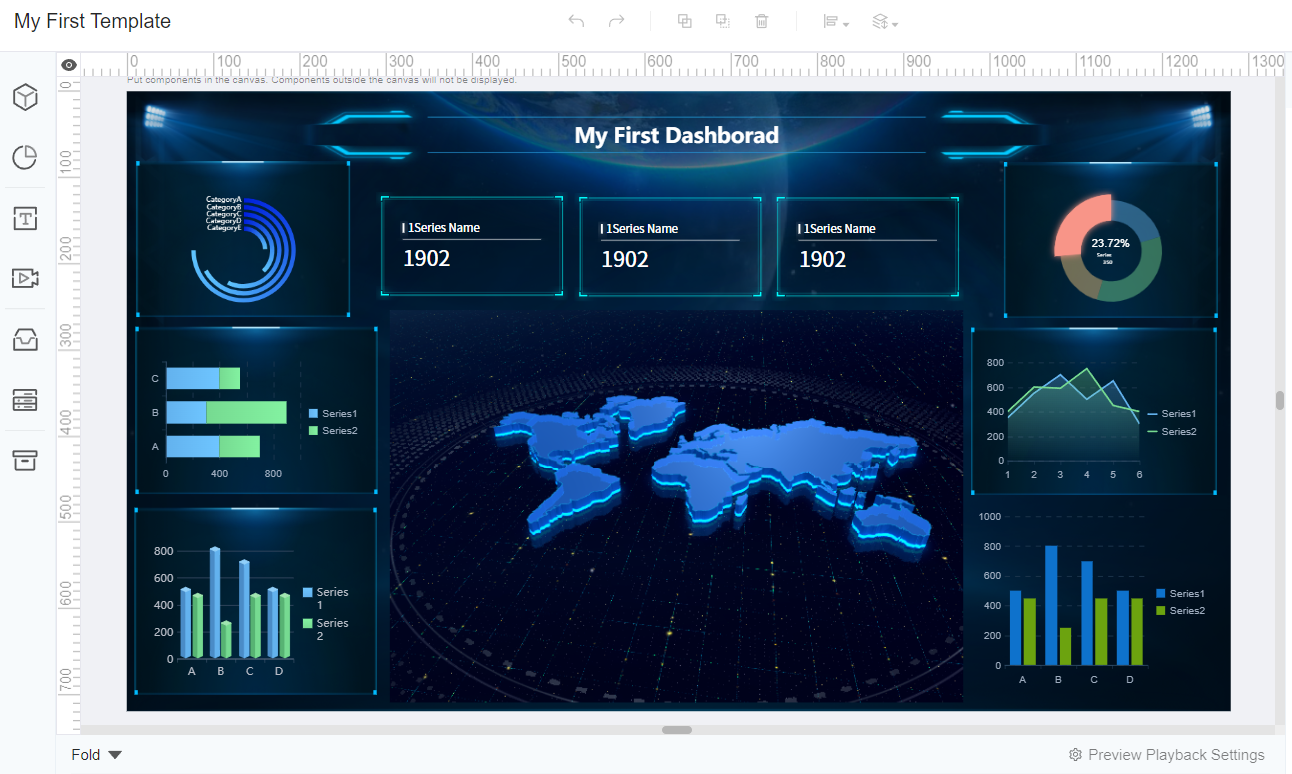
FineVis supports over 60 chart types, allowing you to choose the best format for your data. Whether you need a simple bar chart or a complex 3D model, FineVis has you covered. Its drag-and-drop interface simplifies the process, enabling you to focus on insights rather than technical details.
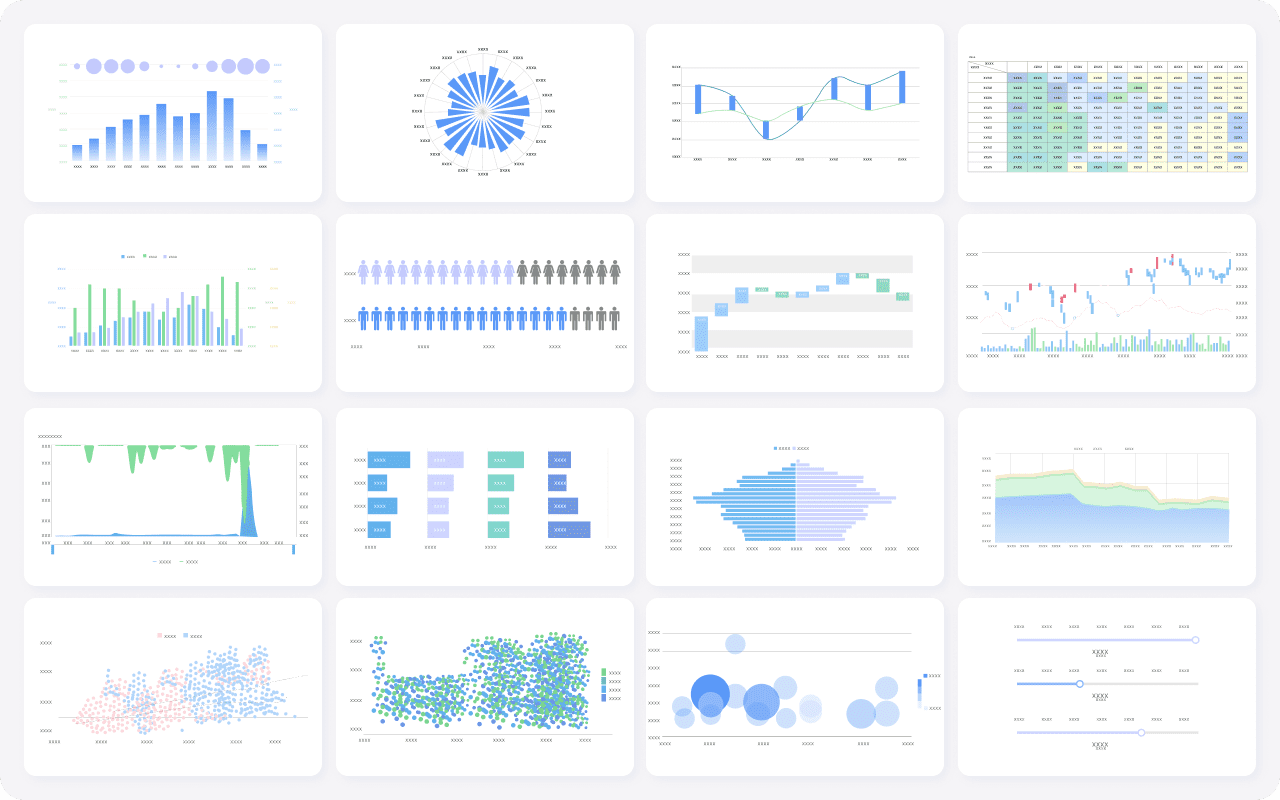
Real-time analytics is another standout feature of FineVis. You can monitor data as it updates, ensuring that your decisions are based on the most current information. This capability is crucial in fast-paced environments where timely insights can make a significant difference.
FineVis also excels in adaptability. Its dashboards are designed to work seamlessly across various devices, including smartphones, tablets, and PCs. This flexibility ensures that you can access your data anytime, anywhere, enhancing your ability to make informed decisions on the go.
For businesses, FineVis offers industry-specific solutions. Whether you're in manufacturing, healthcare, or logistics, FineVis provides tools tailored to your needs. These solutions streamline operations and drive growth by optimizing data insights.
To incorporate FineVis into your workflow and unlock enhanced data visualization capabilities, you’ll need to start by installing FineReport, as FineVis functions as a specialized module within FineReport. Once installed, FineVis offers robust visualization tools that, when combined with FineDataLink, facilitate seamless data integration and visualization, creating a powerful synergy that elevates efficiency and productivity across your data projects.
Digital formats encode information for digital devices. You encounter them in text, audio, video, and images. These formats play a vital role in sectors like business, technology, and everyday life. They enhance accessibility, efficiency, and innovation. As technology evolves, digital formats will continue to advance, offering new possibilities. FanRuan contributes significantly to this progress. Its tools like FineDataLink and FineVis optimize data integration and visualization. By understanding digital formats, you can leverage these advancements to make informed decisions and drive growth.
FAQ
A digital format encodes information for digital devices. You encounter these formats in text, audio, video, and images. Each serves a specific purpose and ensures compatibility across various platforms.
Digital formats make data accessible and easy to share. You benefit from their ability to maintain quality and compatibility across different devices. They also support innovation in technology and communication.
Consider your needs and the intended audience. For text, PDFs work well for sharing documents. MP3s are ideal for music, while MP4s suit videos. JPEGs offer a good balance for images. Choose formats that ensure accessibility and quality.
Lossless compression retains all original data, making it suitable for text and important documents. Formats like PNG use lossless compression. Lossy compression removes some data to reduce file size, which works well for audio and video files. MP3 and JPEG are examples of lossy formats.
Digital formats allow you to access content on various devices. They support tools like screen readers and subtitles, ensuring everyone can enjoy digital content. This inclusivity makes information available to all.
Yes, they streamline processes and save time. You can share documents and media quickly, enhancing collaboration. Businesses reduce paper usage and storage costs. Digital formats also enable faster data processing and analysis.
They enable the development of new tools and applications. You can create interactive content like virtual reality experiences. Digital formats support social media growth and online communities, fostering creativity and progress.
Continue Reading About Digital Format
10 Game-Changing Project Management Reporting Types!
Unlock project success with 10 must-know reporting types! Track progress, manage risks, and stay on budget like a pro.
Lewis
Mar 03, 2025
10 Must-Have Marketing Agency Reporting Tools for Your Success
Optimize your agency's performance with top reporting tools. Explore analytics, social media, SEO, and more for data-driven decisions and efficiency.
Lewis
Oct 09, 2024
15 Best Software Reporting Tools for 2025
Explore the top 15 software reporting tools for 2025. Compare features, pricing, and usability to find the best fit for your business needs.
Lewis
Oct 08, 2024
2025 Best Data Integration Solutions and Selection Guide
Explore top data integration solutions for 2025, enhancing data management and operational efficiency with leading platforms like Fivetran and Talend.
Howard
Dec 19, 2024
2025 Data Pipeline Examples: Learn & Master with Ease!
Unlock 2025’s Data Pipeline Examples! Discover how they automate data flow, boost quality, and deliver real-time insights for smarter business decisions.
Howard
Feb 24, 2025
2025's Best Data Validation Tools: Top 7 Picks
Explore the top 7 data validation tools of 2025, featuring key features, benefits, user experiences, and pricing to ensure accurate and reliable data.
Howard
Aug 09, 2024



